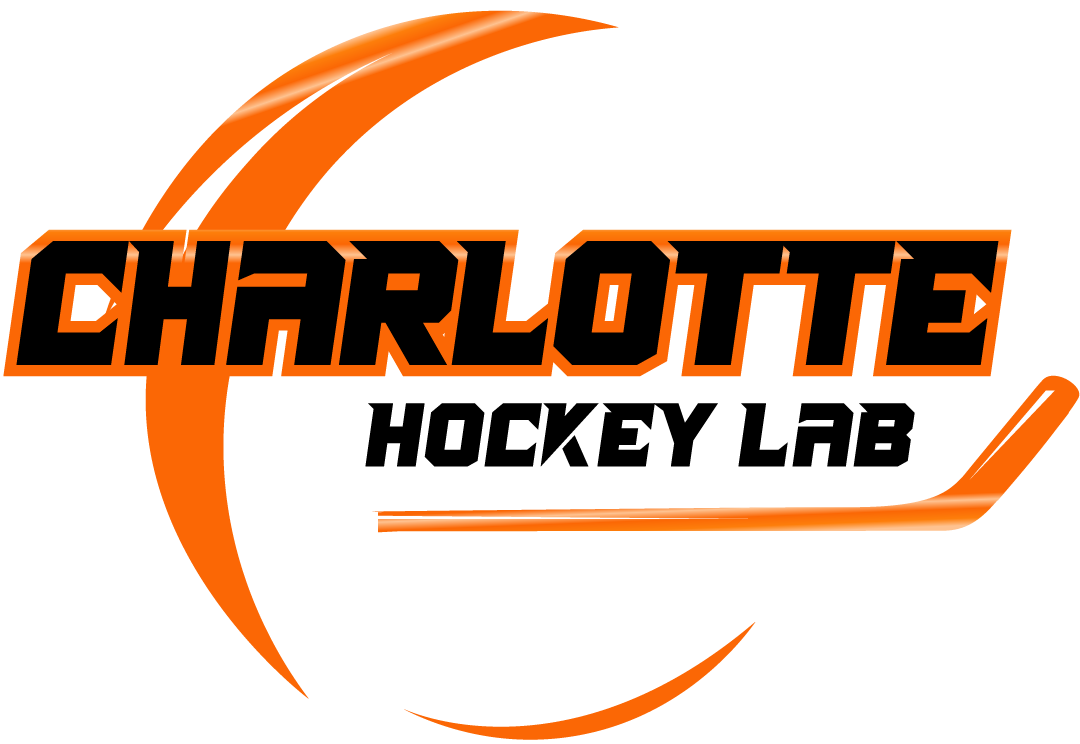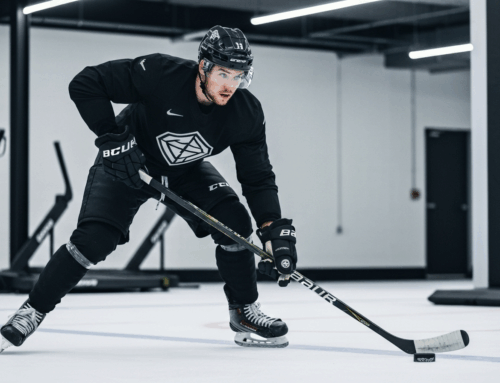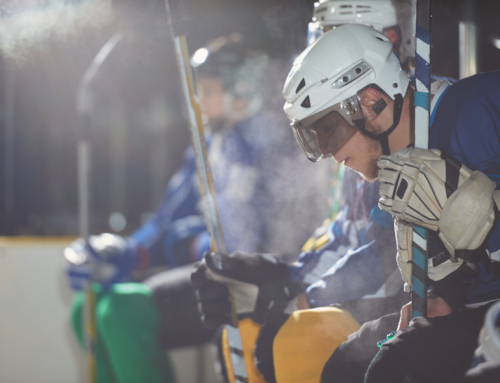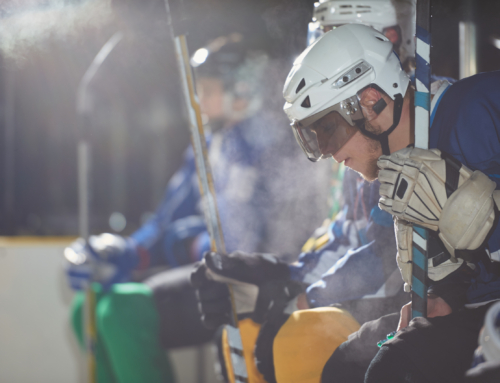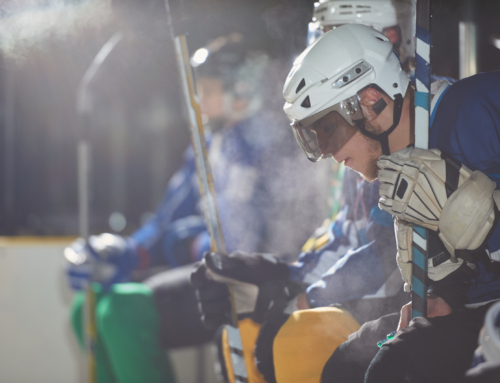Evolution of Modern strategic hockey player development
Hockey has always been a sport demanding speed, skill, and tactical awareness. However, the approach to cultivating these attributes has undergone a significant evolution. Today, the focus is increasingly on Modern strategic hockey player development. This involves a holistic, data-driven, and highly personalized methodology that goes far beyond traditional on-ice practice, encompassing physical conditioning, mental preparation, nutrition, and advanced analytical insights.
The Changing Landscape of Hockey Player Development
For decades, hockey player development often followed a relatively straightforward path. Players would train extensively on the ice, focusing on fundamental skills like skating, puck handling, shooting, and passing. While these core competencies remain absolutely essential, the competitive landscape has shifted dramatically. The game is faster, more demanding physically, and tactically more complex than ever before. Simply honing basic skills isn’t enough to stand out or even keep pace.
The traditional model, often characterized by high-volume, general practices, sometimes overlooked individual player needs and the specific demands of modern gameplay. Development was often more reactive than proactive, addressing weaknesses only after they became apparent in games. This approach, while effective for some players in previous eras, is less optimized for the highly competitive, data-informed environment of contemporary hockey.
Recognizing this shift, coaches, trainers, and organizations have begun to re-evaluate their methodologies. There’s a growing understanding that maximizing a player’s potential requires a more deliberate, strategic approach. This includes integrating off-ice components much earlier and more consistently, leveraging technology for performance analysis, and tailoring programs to individual player strengths, weaknesses, and learning styles.
From Traditional to Targeted: Shifting Development Approaches
The move from traditional, often generalized training methods to more targeted, strategic approaches is perhaps the most defining characteristic of modern hockey development. Traditional training might involve large groups running similar drills regardless of position or specific skill gaps. A forward, defenseman, and goalie might all participate in the same general skating or shooting practice, with limited variation tailored to their roles.
Targeted development, conversely, begins with a detailed assessment of an individual player. What are their specific strengths? Where are their most significant areas for improvement? What position do they play, and what are the unique physical, technical, and tactical demands of that position? This assessment drives the creation of a personalized development plan. For instance, a defenseman needing to improve their transition game might focus specifically on breakout passes and defensive zone exits, incorporating drills designed for powerful and accurate puck movement under pressure.
This shift isn’t just about identifying weaknesses; it’s also about amplifying strengths. A player with exceptional skating speed might work on drills specifically designed to leverage that speed in game situations, such as creating breakaway opportunities from the wing. Targeted development ensures that practice time is utilized efficiently, focusing efforts on the skills and attributes that will have the greatest impact on a player’s performance and overall contribution to their team.
This granular approach necessitates a deeper understanding of the game itself, breaking down complex situations into specific, trainable components. It also requires coaches and trainers with specialized knowledge, not just in general hockey skills but in areas like sports science, biomechanics, and sports psychology. The days of a single coach being responsible for all aspects of development are fading; a multi-disciplinary team is increasingly the norm in high-level strategic player development.
Understanding Modern Strategic Hockey Player Development
At its core, Modern strategic hockey player development is a comprehensive framework aimed at nurturing every facet of an athlete’s potential. It views the player not just as a collection of on-ice skills, but as a complex system where physical, mental, technical, and tactical elements are interconnected. A truly strategic approach requires careful planning, execution, and ongoing evaluation.
Key components of this strategy include:
- Detailed Assessment: Utilizing data, observation, and expert evaluation to understand a player’s current capabilities across all domains.
- Personalized Planning: Creating customized training regimens that address specific needs and goals, rather than one-size-fits-all programs.
- Integrated Training: Combining on-ice skill work with off-ice physical conditioning, mental training, and nutritional guidance.
- Tactical Understanding: Teaching players not just how to execute skills, but when and why within the context of team systems and game situations. This includes understanding concepts like breakout strategies, forechecking systems, and defensive zone coverage.
- Leveraging Technology & Analytics: Using data to track progress, identify trends, analyze performance, and inform training adjustments.
- Continuous Evaluation & Adaptation: Regularly reviewing the player’s progress and making necessary adjustments to the development plan.
Consider on-ice skills within this framework. Instead of just general shooting practice, modern development involves techniques to enhance specific shots like wrist shots (accuracy, power), slap shots (power, timing), or backhand shots (scoring opportunities). Stickhandling drills are tailored for different levels and game scenarios. Passing drills focus on accuracy, timing, and specific types like the saucer pass for clearing obstacles. Skating techniques are broken down into speed, agility, edge work, and balance drills, critical for explosive movements and quick directional changes.
Beyond individual skills, understanding team systems is paramount. This involves learning breakout strategies like the wheel or reverse, mastering power play formations and execution, implementing penalty kill tactics like shot blocking and lane discipline, and understanding forechecking systems such as the aggressive 2-1-2 or conservative 1-2-2 trap. Forwards work on scoring techniques, forechecking, and offensive zone positioning, while defensemen focus on defensive zone coverage, gap control, angling, and executing accurate breakout passes. Goaltenders have specialized training for techniques like the butterfly, rebound control, puck tracking, and positioning (goalie angles).
The internal link boosting offense strategic puck possession offensive zone ties directly into the tactical understanding required for modern players, emphasizing the importance of retaining the puck once inside the attacking third. Similarly, drills for developing powerful defensive zone exits highlights a key strategic area for defensemen and forwards alike in transitioning effectively from defense to offense.
The Role of Analytics and Technology in Training
Analytics and technology are no longer supplementary tools in hockey; they are integral components of modern strategic player development. Data provides objective insights into player performance, allowing coaches and trainers to move beyond subjective observation alone. This includes tracking everything from skating speed and acceleration to shot velocity, puck possession metrics, pass completion percentages, and defensive zone effectiveness.
Advanced cameras and tracking systems can provide detailed biomechanical feedback, analyzing skating stride efficiency, shooting mechanics, and body positioning. This allows for precise adjustments to technique that can significantly improve performance and reduce injury risk. For example, video analysis can help a player refine their one-timer timing and body positioning or perfect the technique for lifting a saucer pass accurately over sticks.
Wearable technology, while still evolving, offers potential for monitoring player load, fatigue levels, and physiological responses during training and games. This data helps optimize training schedules, prevent overtraining, and ensure players are adequately recovered. GPS tracking on the ice can provide data on speed, distance covered, and movement patterns, offering insights into player effort and strategic positioning.
Statistical analytics delves deeper into game performance. Beyond traditional stats like goals and assists, metrics such as Corsi (shot attempt differential), Fenwick (unblocked shot attempt differential), and expected goals (xG) provide a more nuanced understanding of a player’s impact on possession and scoring chances. Analyzing these metrics helps identify areas for improvement in tactical play, decision-making, and contribution to team strategy.
Coaches use this data to inform practice planning, tailor individual drills, and provide specific, measurable feedback to players. For instance, if analytics show a forward is struggling with zone entries by consistently dumping the puck, training can focus on controlled entries and carrying the puck. If a defenseman’s gap control metrics are poor, specific angling drills can be implemented. This data-driven feedback loop is central to the continuous improvement cycle in modern development.
Technology also facilitates communication and learning. Online platforms can be used to share video analysis with players, assign off-ice workouts, track nutritional intake, and provide educational resources on strategy and mental preparation. This accessibility ensures players are engaged and informed about their development process even when away from the rink.
Beyond the Ice: Physical, Mental, and Nutritional Pillars
Recognizing that a hockey player is a complete athlete, modern development places significant emphasis on what happens off the ice. Physical conditioning is paramount, moving beyond general fitness to hockey-specific dryland training exercises. This includes strength training tailored for hockey performance (targeting power, explosiveness), cardiovascular conditioning for endurance (mimicking the stop-start demands with HIIT workouts), plyometric drills for explosiveness (box jumps, lateral bounds), core stability workouts for balance and power, and flexibility/mobility routines to prevent injuries and improve stride length (like hockey-specific yoga targeting hips and hamstrings).
Recovery is also a critical off-ice component. Techniques post-training such as foam rolling (targeting common tight areas like IT bands and quads), proper hydration, and sufficient sleep are understood as fundamental to muscle repair and performance enhancement. Regular check-ups and preventative measures help identify potential issues before they lead to significant injuries, while structured rehabilitation is essential for returning to play safely after setbacks.
The mental aspect of the game is equally vital. Modern development includes mental conditioning and focus training. This involves techniques like visualization to prepare for high-pressure moments (practicing game-winning scenarios), strategies for handling pressure and staying calm under stress, overcoming slumps and regaining confidence, and using pre-game routines to enhance focus and reduce anxiety. Building leadership qualities and understanding effective communication on the ice are also integrated into mental training.
Nutrition provides the necessary fuel for training and recovery. Developing healthy eating habits, understanding dietary guidelines to support energy levels and muscle repair, and ensuring adequate hydration are crucial. Nutrition plans are often personalized based on a player’s training load, body composition goals, and individual needs.
Training table example focusing on balanced nutrition for a demanding practice day:
| Meal | Purpose | Key Components |
|---|---|---|
| Breakfast | Fuel for morning activity/training | Complex carbs (oatmeal, whole grain toast), lean protein (eggs, Greek yogurt), healthy fats (nuts, avocado) |
| Lunch | Replenish energy, support muscle repair | Lean protein (chicken, fish, legumes), complex carbs (brown rice, quinoa, sweet potato), ample vegetables |
| Pre-Practice Snack | Immediate energy boost | Easily digestible carbs (fruit, rice cakes), small amount of protein (handful of nuts) |
| Post-Practice Recovery | Replenish glycogen, repair muscle tissue | Fast-acting carbs (fruit juice, sports drink), protein (whey shake, chicken breast) – within 30-60 mins |
| Dinner | Sustained nutrient intake, recovery | Balanced meal with protein, complex carbs, healthy fats, and plenty of vegetables |
Ignoring any of these pillars – physical, mental, or nutritional – creates a significant gap in a player’s overall development. A strategic approach ensures they are all addressed concurrently and consistently.
Personalization and Specialization in Player Pathways
No two hockey players are exactly alike. They have different genetic predispositions, physical builds, skill sets, learning preferences, and roles on the team. Modern strategic development recognizes this inherent individuality and emphasizes personalization. This goes beyond simply identifying strengths and weaknesses; it involves understanding how a player learns best, what motivates them, and what specific demands their position places on them.
Personalization means tailoring not just the content of training, but also the delivery. Some players respond better to visual feedback (video analysis), others to verbal instruction, and some to hands-on practice. Development plans are flexible and adapted based on how the player is progressing and responding to training stimuli. This agile approach ensures the player remains engaged and the training remains effective.
Specialization refers to focusing on the unique requirements of a player’s position while still maintaining overall athleticism and foundational skills. While youth players often benefit from developing a broad range of skills (the debate of early specialization vs. versatility is important in youth hockey), as players advance, position-specific training becomes increasingly critical.
For forwards, this might involve specialized drills for scoring techniques, forechecking strategies, optimizing offensive zone positioning, and developing explosive winger speed to create breakaway opportunities. Centers, often considered the quarterbacks of the team, receive specific training on faceoff techniques, defensive transitions, and offensive playmaking responsibilities.
Defensemen focus on mastering defensive zone coverage, developing gap control and angling techniques, and executing powerful breakout passes under pressure. Their training emphasizes positional responsibility, defensive awareness, and initiating the transition game effectively.
Goaltenders have perhaps the most specialized training of all. This includes mastering techniques like the butterfly, developing rebound control strategies, improving puck tracking and vision through specific drills, and fine-tuning goalie angles to cut down the net effectively. Goaltender conditioning workouts are also highly specialized, focusing on agility, power in their crease movements, and endurance for long games. Modern goaltending even sees players blending styles, like the hybrid goalie who combines traditional and contemporary techniques.
A personalized and specialized approach ensures that a player’s development is not just efficient, but also highly relevant to their role on the team and their long-term potential in the sport. It allows players to become experts in their specific craft while still possessing the fundamental skills necessary for overall success.
For example, a defensemen’s personalized plan might heavily feature drills focused on their first pass out of the defensive zone, while a winger’s plan could prioritize exercises that build straight-line speed and puck protection at high speeds. The integration of strength training for specific muscle groups crucial for a player’s position (e.g., rotational strength for shooters, lower body power for skaters) exemplifies this specialization.
Key Trends Shaping the Future of Hockey Training
The field of hockey player development is constantly evolving, driven by new research in sports science, advancements in technology, and changing tactical approaches in the game itself. Several key trends are likely to shape the future of training:
- Increased Integration of Sports Science: Expect even deeper integration of disciplines like biomechanics, exercise physiology, and nutrition science directly into training programs, not just as separate components.
- More Sophisticated Analytics: The use of advanced tracking technology and complex statistical models will become even more prevalent, providing real-time feedback and predictive insights into performance and injury risk. Research on performance analysis in hockey continues to evolve, driving these advancements.
- Personalized and Adaptive Learning Platforms: Technology will facilitate more highly personalized training plans delivered through digital platforms, adapting automatically based on player performance and feedback.
- Greater Emphasis on Cognitive Skills: Training will increasingly focus on cognitive aspects like decision-making under pressure, anticipation skills (reading the play), and developing hockey sense through game-like simulations and drills that force quick processing.
- Holistic Athlete Well-being: Mental health awareness and support will become standard components of player development programs at all levels, recognizing the pressures young athletes face.
- Early Focus on Movement Literacy: Youth development may place even greater emphasis on fundamental movement patterns and overall athleticism before intense hockey-specific training, building a robust physical foundation. The Long-Term Athlete Development (LTAD) model provides a framework for this.
- Environmental Considerations in Gear: Innovations in equipment may increasingly focus on sustainable materials and manufacturing processes (eco-friendly gear), reflecting growing environmental awareness.
- Adaptive and Inclusive Program Expansion: Initiatives to make hockey accessible to individuals of all abilities and backgrounds will continue to grow, fostering a more diverse and inclusive hockey community.
The future of Modern strategic hockey player development lies in combining the best of traditional skill development with cutting-edge sports science, technology, and a deep understanding of individual human potential. It’s about creating athletes who are not just physically skilled, but also mentally resilient, tactically astute, and truly understand how to optimize their performance both on and off the ice. This continuous evolution ensures that the next generation of hockey players will be more prepared than ever to face the challenges and demands of the game.
The journey of player development is continuous. It requires dedication from the player, expertise from coaches and trainers, support from families, and a commitment from organizations to invest in comprehensive, strategic programs. As the sport evolves, so too must the methods used to shape its future stars.
Have questions? Contact us here.

We use only the finest ingredients to produce stellar tastes.
